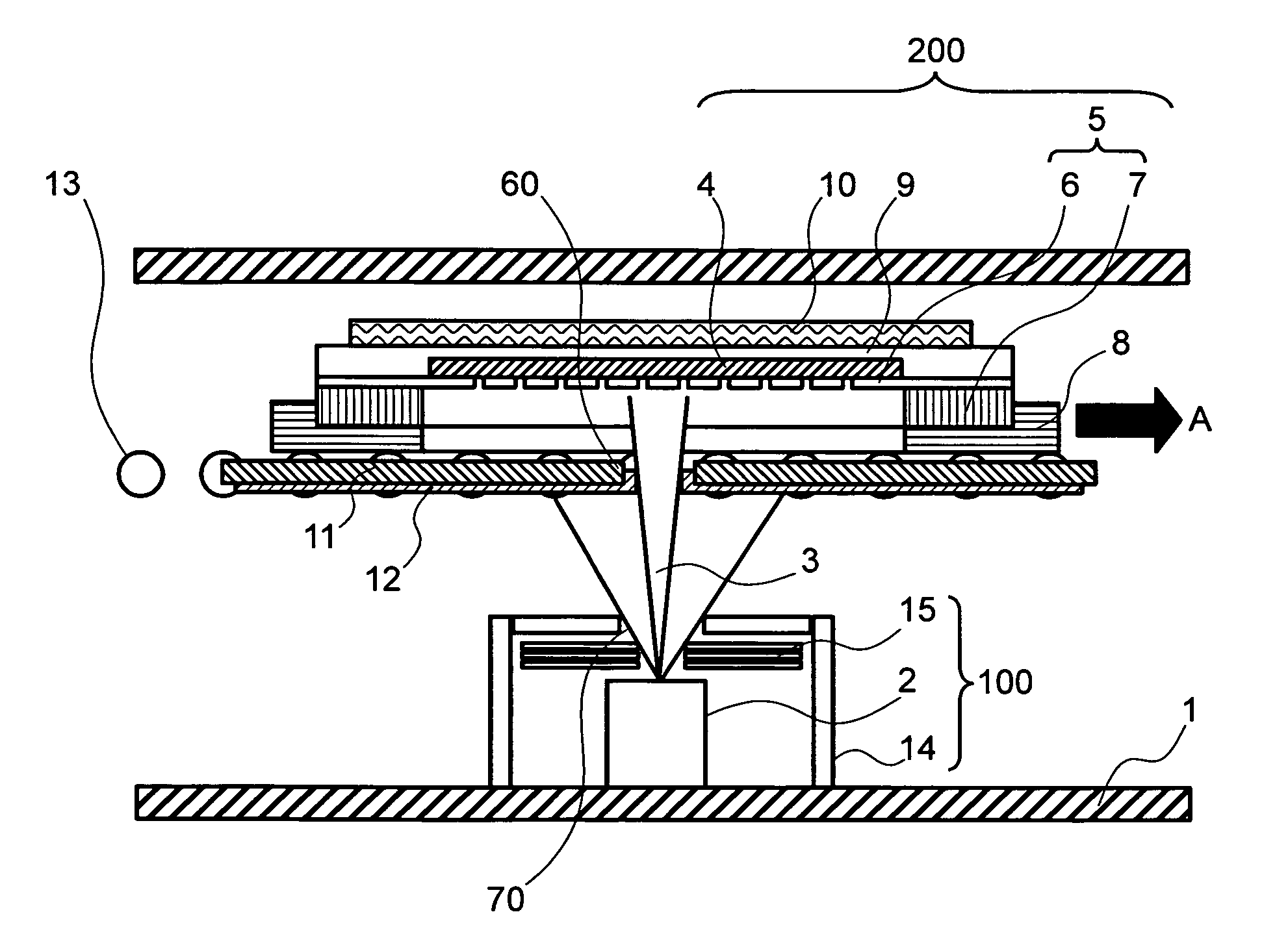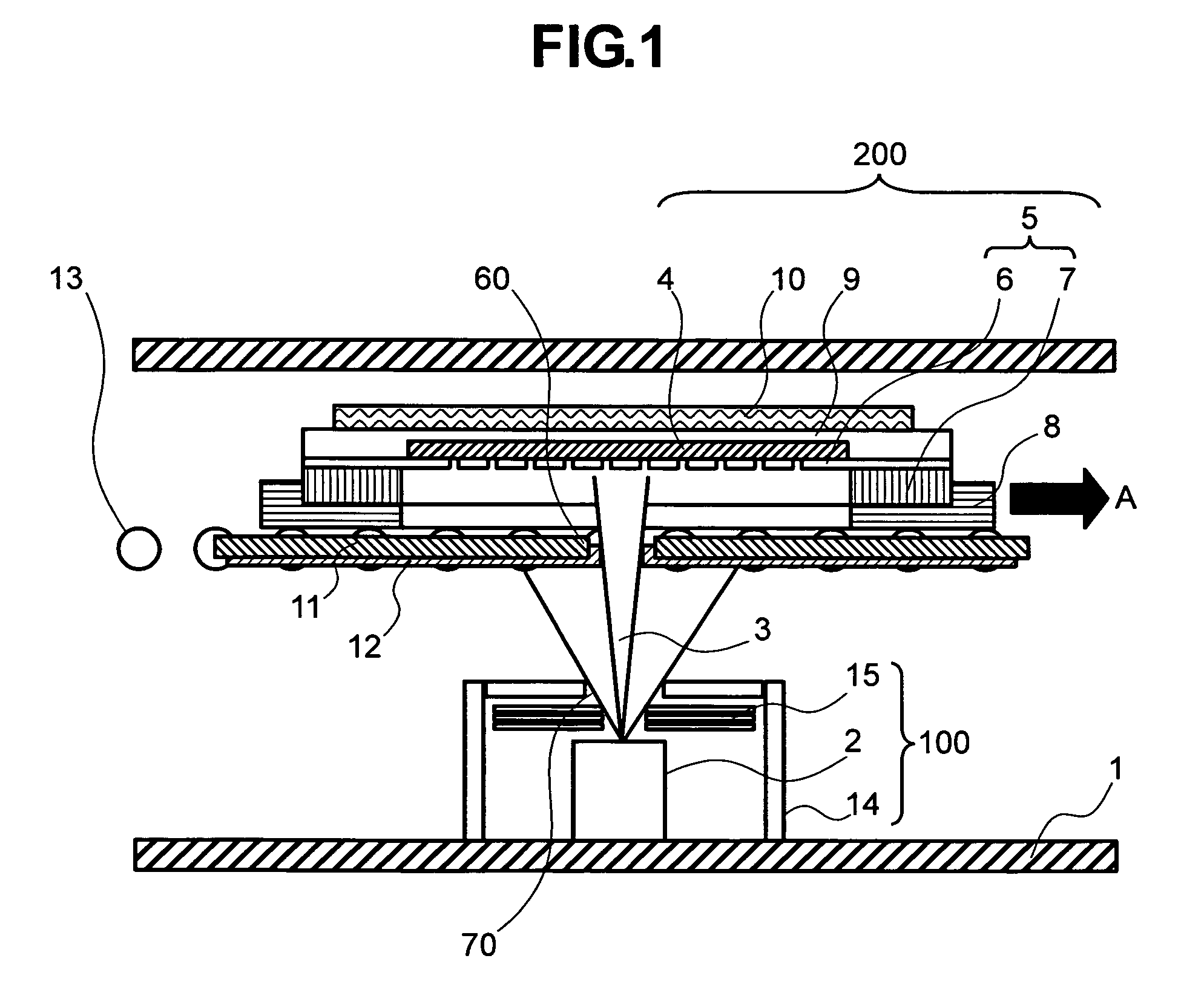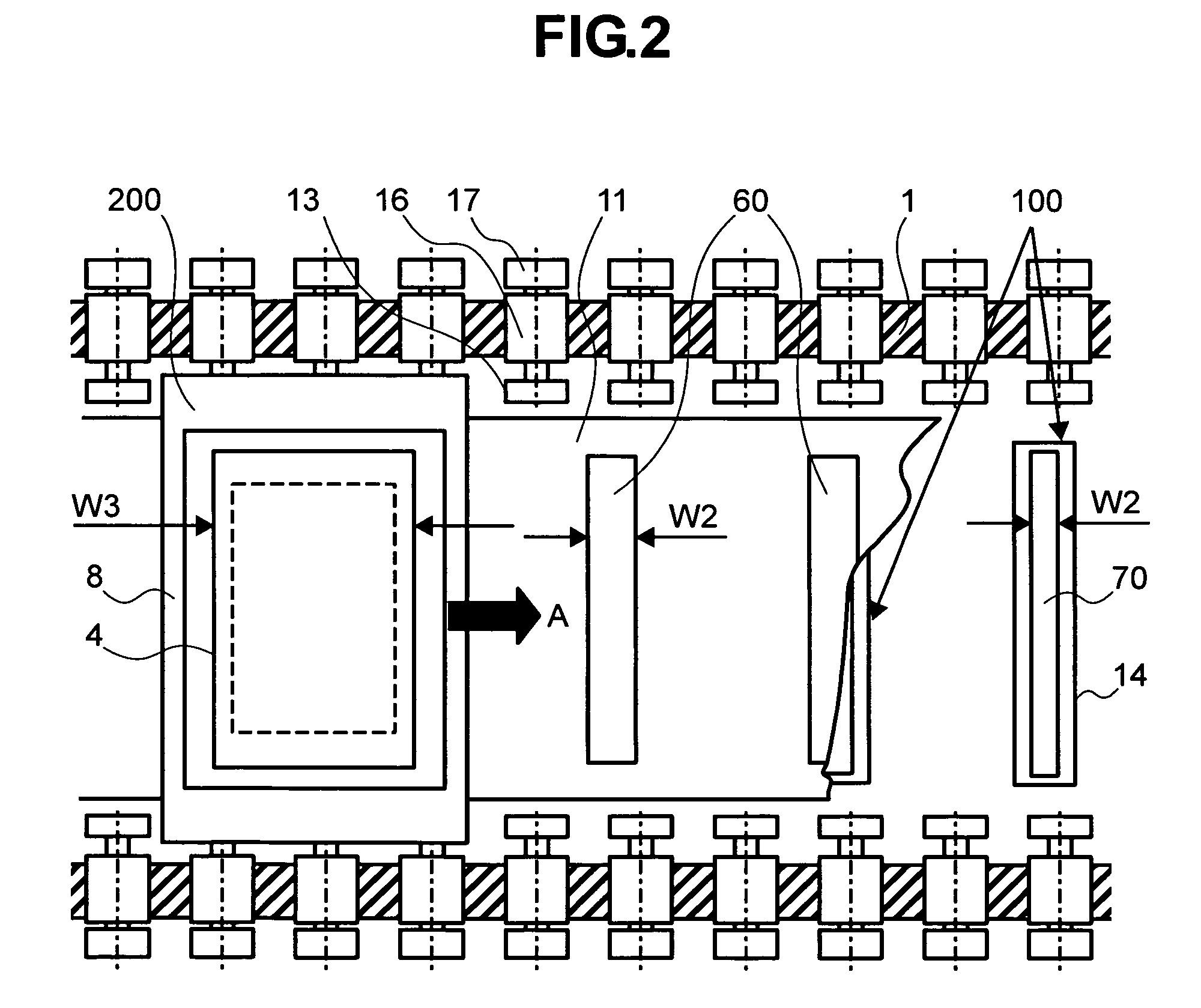Vapor deposition method and apparatus
a technology of vapor deposition and evaporation position, which is applied in the direction of vacuum evaporation coating, chemical vapor deposition coating, coating, etc., can solve the problems of partially accelerating deterioration in the film, misalignment of firm-forming position, etc., to prevent misalignment of evaporation position, increase cooling effect, and stabilize product quality
- Summary
- Abstract
- Description
- Claims
- Application Information
AI Technical Summary
Benefits of technology
Problems solved by technology
Method used
Image
Examples
first embodiment
[0044
[0045]FIG. 1 is a cross-sectional view of a vapor deposition apparatus in a first embodiment of the invention. FIG. 2 is a plan view of the vapor deposition apparatus of FIG. 1, viewed from above. Any component similar to that in the previous example is provided with the same reference numeral. Inside of the vacuum chamber 1 being a vessel in a vacuum atmosphere, the evaporation source unit 100 is disposed. In the evaporation source unit 100, a material serving as an evaporation source is fixedly provided. The evaporation source unit 100 is formed with a vapor exhaust nozzle 70 from which jets of steam are directed. Above the evaporation source unit 100 in the vacuum chamber 1, the carrier set 200 is disposed to be moved by the transfer rollers 13 in the direction of an arrow A.
[0046]A cooling board 11 is provided to be a piece with the transferring carrier set 200 on the side closer to the evaporation source unit 100. The cooling board 11 is provided with, on the side of the e...
second embodiment
[0057
[0058]FIG. 3 is a cross-sectional view of a vapor deposition apparatus in a second embodiment of the invention, showing the cooling mechanism of a transfer roller. In FIG. 3, the transfer roller 13 and the carrier 8 are the same in basic configuration as those in the first embodiment, and the evaporation source unit 100 and the carrier set 200 are the same in configuration as those in the first embodiment. The cooling mechanism of the first embodiment shown in FIG. 1 is for cooling by heat radiation from the components, i.e., the carrier 8, the evaporation mask 5, and the substrate 4. Generally, cooling by heat conduction through contact is better in efficiency than cooling by radiation, and therefore, in the second embodiment, the transfer rollers 13 are each provided with the cooling capability.
[0059]In FIG. 3, a vacuum seal for the vacuum chamber 1 and the transfer roller 13 is implemented by a magnetic fluid seal unit 16. The magnetic fluid seal unit 16 is a combination of ...
third embodiment
[0062
[0063]FIG. 4 is a cross-sectional view of a vapor deposition apparatus in a third embodiment of the invention. In FIG. 4, the carrier set 200 is transferred from the paper surface side toward the front. FIG. 5 is a side view of the vapor deposition apparatus of FIG. 4 viewed from the substrate side. Note that, in the third embodiment, the mask frame 7 may be provided with the function of the carrier 8 so that the carrier 8 may not be necessarily provided. In the first embodiment, the carrier set 200 carrying therein the components, i.e., the carrier 8, the evaporation mask 5, and the substrate 4, is transferred in the horizontal direction. Alternatively, in the third embodiment, the carrier set 200 is disposed upright for transfer, and during transfer of such a carrier set 200, film formation is carried out. Also in the third embodiment, the evaporation source unit 100 is attached to the side wall surface of the vacuum chamber 1 to allow the steam 3 to reach all over the substr...
PUM
| Property | Measurement | Unit |
|---|---|---|
| temperature | aaaaa | aaaaa |
| temperature | aaaaa | aaaaa |
| length | aaaaa | aaaaa |
Abstract
Description
Claims
Application Information
 Login to View More
Login to View More - R&D
- Intellectual Property
- Life Sciences
- Materials
- Tech Scout
- Unparalleled Data Quality
- Higher Quality Content
- 60% Fewer Hallucinations
Browse by: Latest US Patents, China's latest patents, Technical Efficacy Thesaurus, Application Domain, Technology Topic, Popular Technical Reports.
© 2025 PatSnap. All rights reserved.Legal|Privacy policy|Modern Slavery Act Transparency Statement|Sitemap|About US| Contact US: help@patsnap.com



